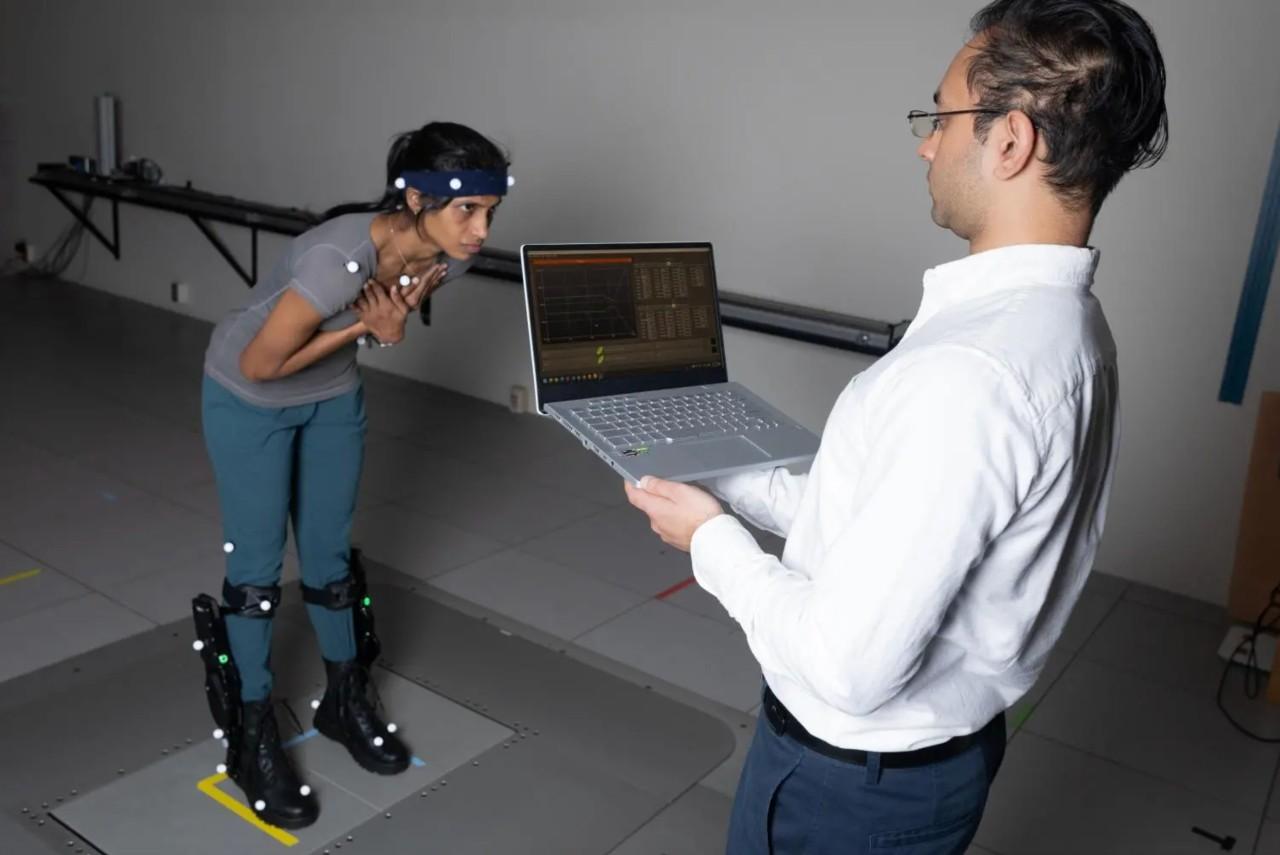Postdoctoral fellow Surabhi Simha demonstrates how researchers tested whether robotic ankle exoskeleton boots can help people with their balance when its disrupted. Subjects wore sensors for motion capture, muscle activity, and ultrasound while they stood on a platform that shifts abruptly to disrupt their balance. Research engineer Rish Rastogi, right, monitors some of the data being collected.
Wearable robotics promise to help older people retain their mobility and paraplegic patients regain theirs. But, so far, they’re not great at keeping people from falling.
Human balance is a complicated dance, and even the most advanced robots and wearables like robotic exoskeletons have trouble replicating how our brains and bodies work together to keep us upright.
In a paper published Feb. 15 in Science Robotics, the group, led by McCamish Distinguished Chair Lena H. Ting, showed an ankle exoskeleton must react faster than our bodies to improve balance. Participants didn’t recover any more quickly when the exoskeleton delayed applying power until the same time muscles in the leg and ankle activated to restore balance.
Latest BME News
Jo honored for his impact on science and mentorship
The department rises to the top in biomedical engineering programs for undergraduate education.
Commercialization program in Coulter BME announces project teams who will receive support to get their research to market.
Courses in the Wallace H. Coulter Department of Biomedical Engineering are being reformatted to incorporate AI and machine learning so students are prepared for a data-driven biotech sector.
Influenced by her mother's journey in engineering, Sriya Surapaneni hopes to inspire other young women in the field.
Coulter BME Professor Earns Tenure, Eyes Future of Innovation in Health and Medicine
The grant will fund the development of cutting-edge technology that could detect colorectal cancer through a simple breath test
The surgical support device landed Coulter BME its 4th consecutive win for the College of Engineering competition.








